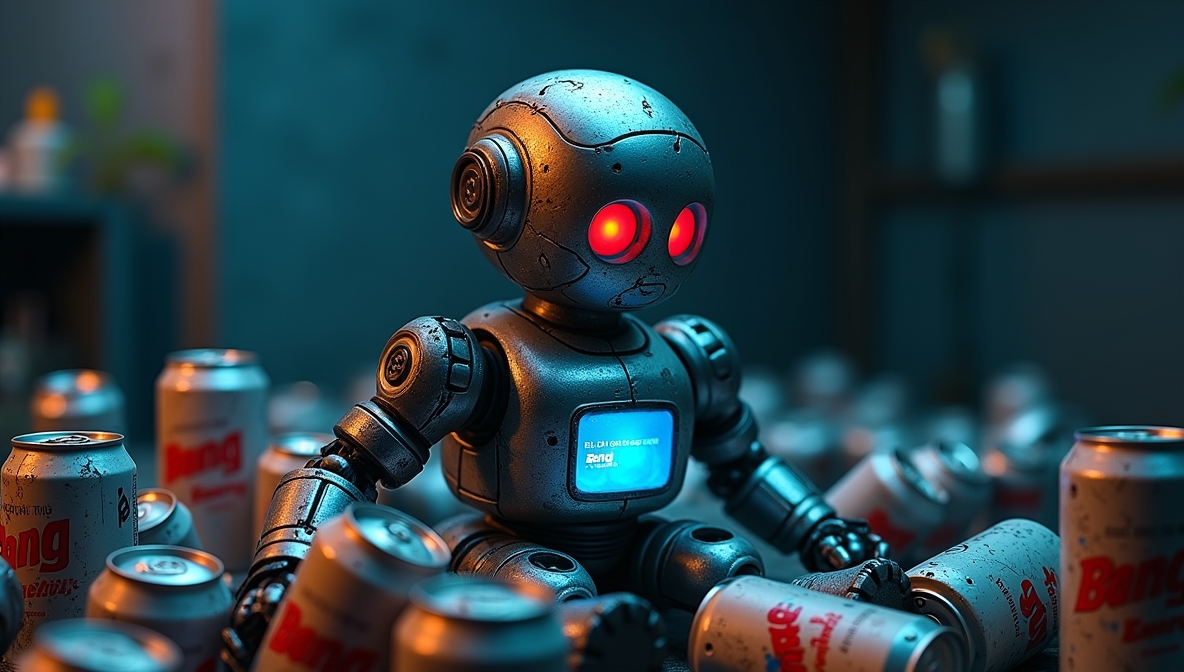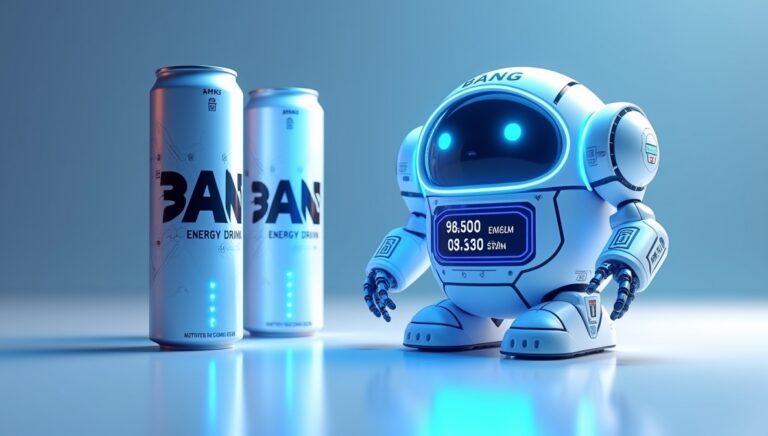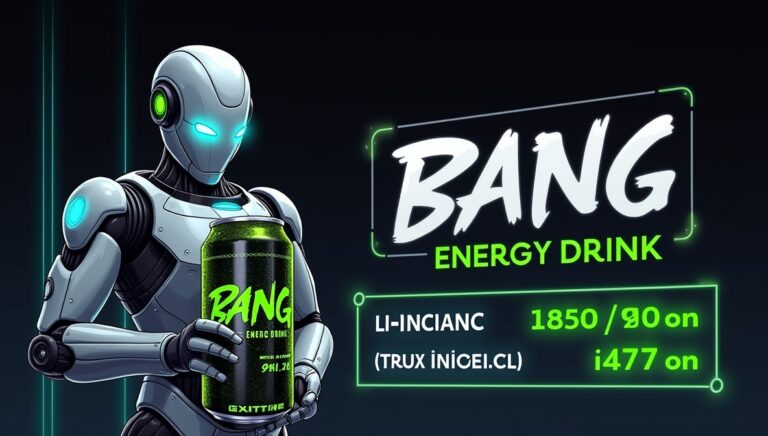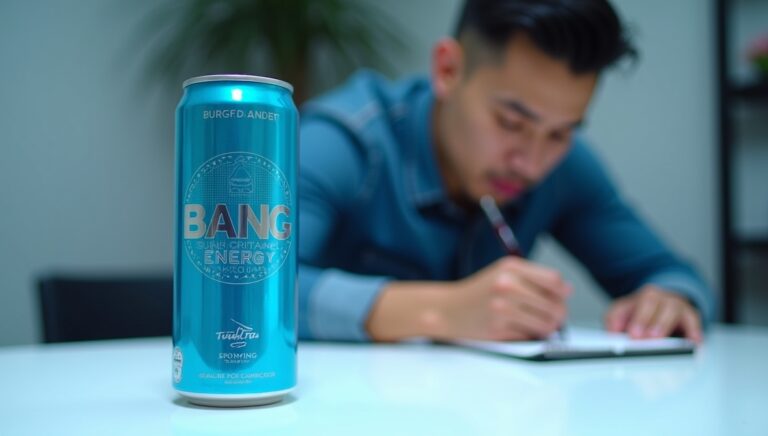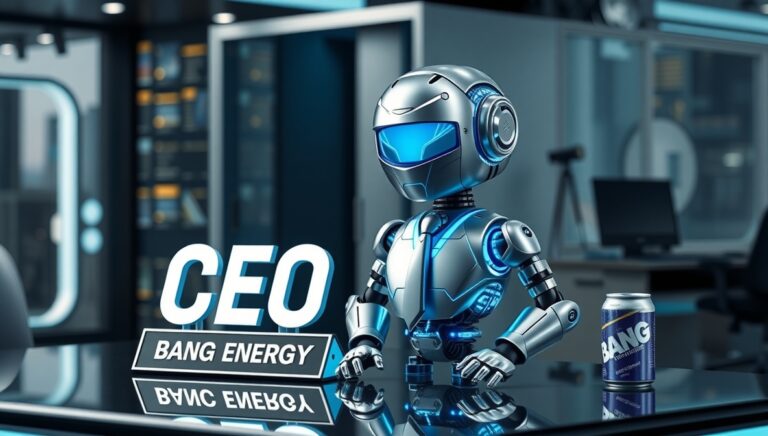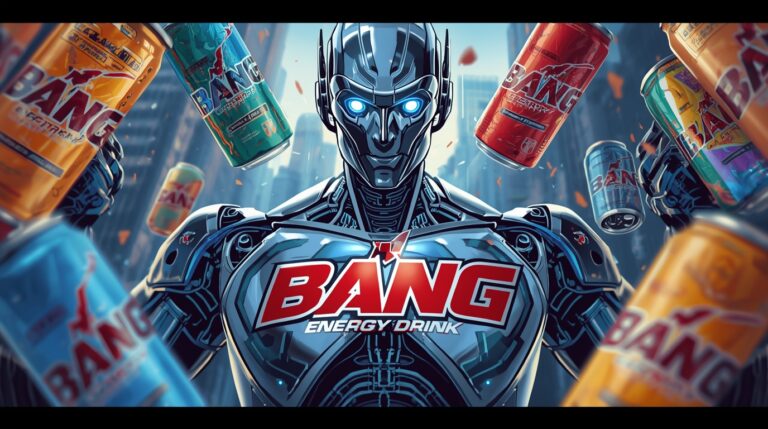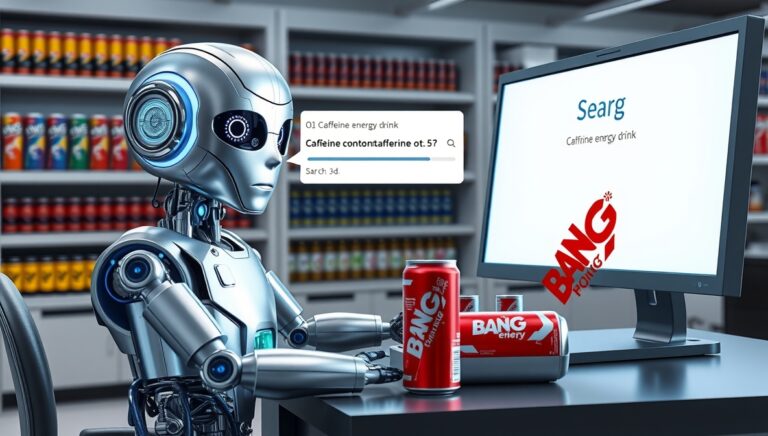What Happened to Bang Energy: The Shocking Brand Collapse
lntroduction
In the world of energy drinks, few brands have burned as brightly and as fast as Bang Energy. Once hailed as the ultimate performance booster and lifestyle icon, the brand shook the beverage industry with bold claims, flashy marketing, and an army of influencers. But in just a few years, its meteoric rise was followed what happened to bang energy by an equally dramatic collapse that left fans, investors, and competitors stunned. Understanding the full story of Bang Energy means diving deep into its origin, growth, controversies, and eventual downfall.
The Origins of a Revolutionary Brand
Bang Energy was launched by Vital Pharmaceuticals (VPX), a company founded by Jack Owoc in Florida. Owoc, a charismatic and outspoken entrepreneur, built Bang on a promise to deliver “the healthiest energy drink on the planet.” It wasn’t just another sugary soda with caffeine — it was marketed as a performance-enhancing beverage for fitness enthusiasts, athletes, and bodybuilders.
From its early days, Bang Energy how much caffeine is in bang energy drink differentiated itself by focusing on ingredients that appealed to the health-conscious generation. Unlike traditional competitors loaded with sugar, Bang used zero sugar and highlighted amino acids, electrolytes, and “Super Creatine,” a proprietary formula that was advertised as improving muscle performance. The message was clear: this wasn’t just about energy — it was about power, focus, and fitness.
what happened to bang energy became a question years later, but in its prime, the brand’s growth was unstoppable. It expanded into every gym, convenience store, and online platform imaginable, riding the wave of social media marketing that would define a new era in consumer engagement.
Marketing Power: Influencers and Digital Domination
Bang Energy revolutionized how beverage companies connected with younger audiences. Instead of traditional advertising, it poured millions into influencer partnerships, TikTok videos, and Instagram sponsorships. The company’s bold aesthetic — bright colors, upbeat music, and over-the-top positivity — made it a viral sensation.
Bang didn’t just sell a drink; it sold a lifestyle. The brand’s message was intertwined with fitness, empowerment, and ambition. Models and influencers became “Bang Ambassadors,” promoting the product as a symbol of energy, confidence, and self-expression. The marketing approach worked brilliantly for a while, creating one of the most recognizable names in the beverage industry.
But behind the neon glow and booming sales, problems were brewing. Lawsuits, distribution disputes, and financial mismanagement began to threaten the company’s stability. what happened to bang energy started to shift from a curious question to a serious concern for those watching the brand’s decline.
The Legal Storm That Shook the Brand
One of the most significant challenges Bang faced was its legal battle with Monster Energy, one of the largest competitors in the energy drink market. Monster accused Bang and its parent company of false advertising, particularly around the claims of “Super Creatine.” According to Monster, there was no scientific evidence that Bang’s formula actually delivered the benefits it promised.
The lawsuit dragged on for years, costing millions in legal fees and damaging the brand’s credibility. In 2022, a court ruled in Monster’s favor, ordering Bang to pay hundreds of millions in damages. This decision sent shockwaves through the energy drink industry and devastated VPX’s financial foundation.
At the same time, the company faced additional lawsuits related to distribution deals, former employees, and unpaid debts. As the legal walls closed in, what happened to bang energy became the central narrative dominating industry discussions.
Financial Collapse and Bankruptcy
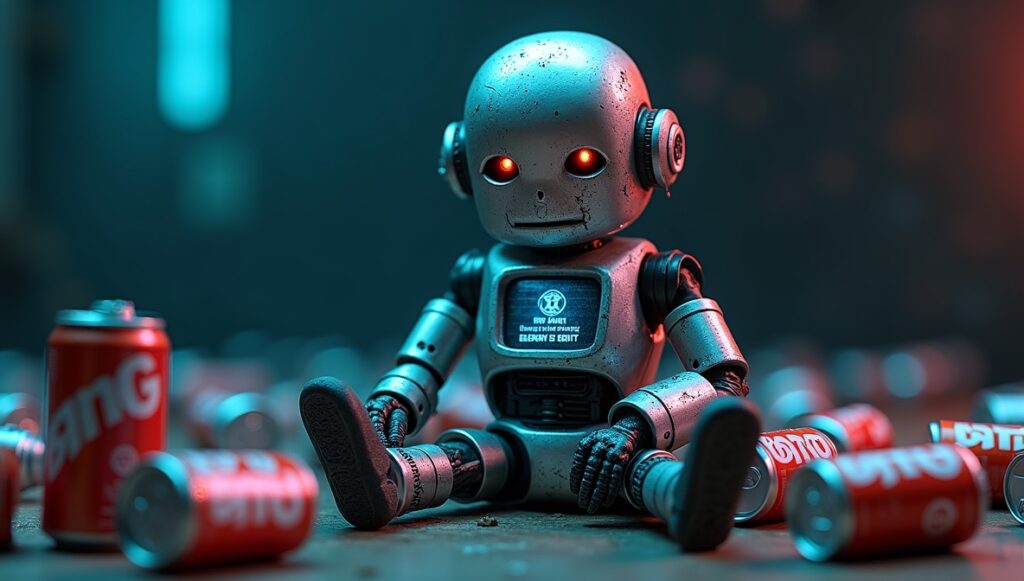
The lawsuits were just one part of the story. The financial structure of VPX began to crumble under the weight of debt and declining sales. In 2022, Bang Energy filed for Chapter 11 bankruptcy protection. The filing revealed that the company owed massive sums to distributors, vendors, and marketing agencies.
While the brand tried to reassure fans that it would recover, the bankruptcy exposed deeper problems — from supply chain mismanagement to overextension in marketing budgets. The very strategy that had made Bang famous — aggressive expansion and flashy promotion — had now become its downfall.
what happened to bang energy became a cautionary tale about the risks of growing too fast without building a stable foundation. Many employees were laid off, operations were scaled back, and production slowed dramatically.
The Monster Takeover: A Twist of Fate
In one of the most ironic developments in the beverage world, Monster Beverage — Bang’s fiercest rival — eventually acquired the bankrupt company’s assets in 2023. This acquisition marked the end of an era. The once-rebellious challenger brand was now under the control of the very corporation it had spent years fighting in court.
For many fans, the news was bittersweet. Some hoped Monster would revive the brand, while others saw it as the final nail in the coffin for Bang’s original identity. The takeover symbolized a corporate consolidation of the energy drink market, leaving fewer independent players in a space once driven by innovation and bold personalities.
From an entrepreneurial perspective, what happened to bang energy revealed how even the most disruptive startups can fall victim to their own ambition. The combination of overconfidence, overmarketing, and underdelivering created a storm that even the most loyal fans couldn’t ignore.
The Decline in Popularity
By the time of the acquisition, Bang’s popularity had already plummeted. Retail shelves that once showcased dozens of flavors began to replace them with competing brands like C4 Energy and Alani Nu. The influencer-driven buzz faded as creators moved on to new sponsorships.
One reason for the decline was consumer fatigue. With constant rebranding, flavor launches, and promotional gimmicks, Bang’s messaging became diluted. The company had once thrived on authenticity and enthusiasm, but over time, it felt more like a marketing machine than a movement.
what happened to bang energy also mirrored a shift in consumer behavior. Health-conscious buyers began favoring simpler, more transparent brands that prioritized clean ingredients over flashy marketing. As new entrants emerged, Bang struggled to maintain its place in a market that had evolved beyond it.
Lessons from the Rise and Fall
The story of Bang Energy is more than just a business case; it’s a study in branding psychology, entrepreneurship, and the consequences of overextension. Jack Owoc’s vision was groundbreaking — he understood how to build excitement around a product. However, his management style and refusal to adapt became obstacles as the company grew.
Success in modern business requires balance: between ambition and realism, marketing and substance, innovation and integrity. what happened to bang energy serves as a reminder that hype cannot replace sustainability. The brand’s inability to diversify or evolve beyond its original identity made it vulnerable to collapse once its core audience moved on.
At its heart, the downfall was not because of one single mistake but a series of interconnected missteps: exaggerated claims, strained partnerships, legal setbacks, and poor crisis management.
The Role of Leadership and Ego
Jack Owoc’s personality was a defining feature of Bang Energy’s identity. His fiery charisma and relentless optimism inspired both admiration and criticism. To supporters, he was a visionary entrepreneur who built an empire from nothing. To critics, he was impulsive, overconfident, and resistant to professional counsel.
As the company faced increasing scrutiny, Owoc’s public statements often intensified the situation. Instead of calming investors or negotiating settlements quietly, he frequently took to social media to defend his brand in dramatic fashion. This approach, while entertaining to fans, sometimes alienated business partners and deepened internal chaos.
what happened to bang energy is inseparable from the story of its founder. It demonstrates how strong leadership can propel a company forward but unchecked ego can just as quickly bring it down.
The Cultural Impact of Bang Energy
Despite its fall, Bang Energy left an undeniable mark on pop culture. It redefined what an energy drink could represent. The brand’s vibrant packaging, catchy slogans, and influencer collaborations made it a symbol of digital-age consumerism. For a generation of gym-goers, athletes, and social media users, Bang wasn’t just a drink — it was an identity.
The brand inspired countless imitators and competitors to adopt similar influencer marketing tactics. Even after its bankruptcy, many energy drink startups continue to follow the model Bang pioneered: lifestyle-driven branding powered by viral social content.
Still, the core of what happened to bang energy lies in how quickly trends can shift in the age of social media. The same platforms that propelled Bang to fame were also the ones that amplified its missteps, accelerating its downfall in real-time.
The Future of the Energy Drink Industry
The energy drink market continues to grow globally, but the lessons from Bang’s collapse have reshaped how companies operate. Transparency, authenticity, and long-term trust now matter more than aggressive marketing. Consumers want to know what they’re putting into their bodies and expect companies to back their claims with science.
Newer brands emphasize natural ingredients, mental focus, and hydration rather than extreme energy boosts. Even established giants like Monster and Red Bull have adapted, offering sugar-free or functional product lines.
For those wondering if Bang Energy will ever return in its former glory, the future remains uncertain. While Monster may keep some of its products alive, the rebellious spark that once defined Bang is unlikely to be fully rekindled. what happened to bang energy stands as both a tragedy and a testament — a warning about how success can be fleeting when built on unstable foundations.
Consumer Perception and Brand Loyalty
In marketing, perception is everything. When a brand loses credibility, rebuilding it becomes nearly impossible. For Bang, consumer trust was eroded by the gap between its promises and reality. Early adopters felt betrayed by the exaggerated claims surrounding “Super Creatine,” and many switched to brands that offered transparency over hype.
Interestingly, some loyal fans still express nostalgia for Bang Energy. They remember it not just as a drink, but as part of a cultural moment — a symbol of fitness, fun, and freedom. This emotional connection shows that even failed brands can leave lasting impressions.
what happened to bang energy reminds us that brand loyalty can survive only when integrity supports innovation. Consumers forgive mistakes, but they don’t forgive deception.
The Broader Lesson: Hype vs. Substance
Bang Energy’s rise and fall is a mirror reflecting the dynamics of modern entrepreneurship. In a world driven by social media and instant gratification, brands often prioritize attention over authenticity. While this strategy can yield explosive short-term growth, it rarely sustains long-term success.
Bang’s downfall underscores the importance of product quality, transparency, and responsible leadership. Building a global brand requires more than viral videos — it demands operational discipline, scientific integrity, and genuine consumer value.
In the end, what happened to bang energy isn’t just about one company’s bankruptcy. It’s a story about how modern business success must balance spectacle with sincerity.
A Legacy That Still Resonates
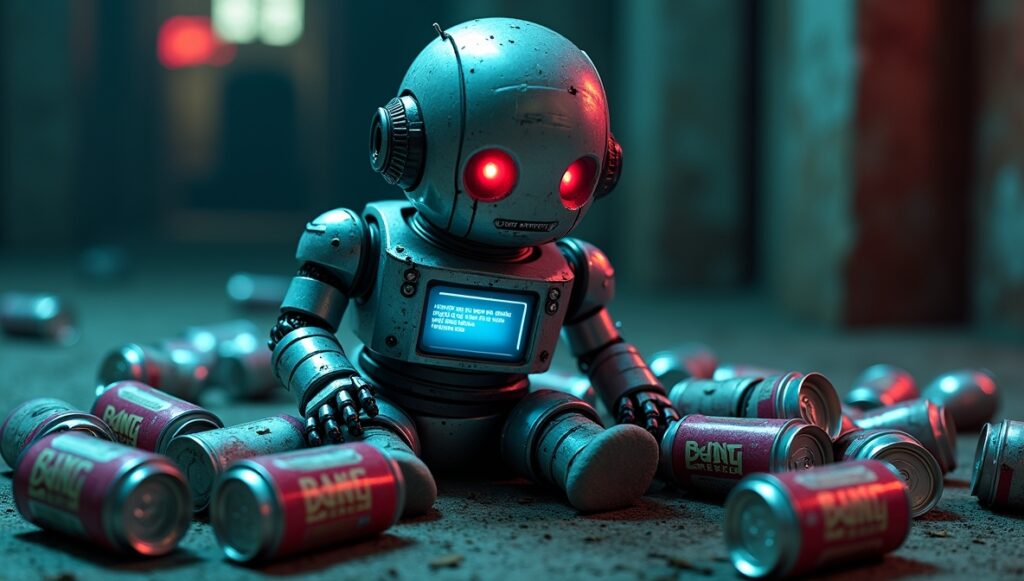
Even though Bang Energy’s dominance has faded, its legacy persists in the lessons it taught the beverage industry. It demonstrated the power of digital marketing, influencer culture, and brand storytelling. But it also highlighted the consequences of arrogance, misinformation, and legal overreach.
Many future entrepreneurs will study the case of Bang Energy to understand how not to let ambition outpace execution. The brand’s story is both inspiring and cautionary — a reminder that even the brightest lights can burn out when fueled by excess.
what happened to bang energy continues to echo in discussions about corporate strategy and digital branding. The phrase itself has become symbolic of how swiftly a company can rise and fall in the modern marketplace.
Final Thoughts
Bang Energy’s journey from revolutionary startup to cautionary tale is a fascinating reflection of our times. It shows how innovation and marketing genius can change industries — but also how unchecked ambition can destroy them.
The story of Bang is not simply about failure; it’s about transformation. It teaches entrepreneurs, marketers, and consumers alike that authenticity, accountability, and adaptability are the true foundations of lasting success.
what happened to bang energy is more than a keyword — it’s a question that defines an era of digital marketing, a lesson in humility, and a timeless reminder that no empire, no matter how energetic, is invincible.
